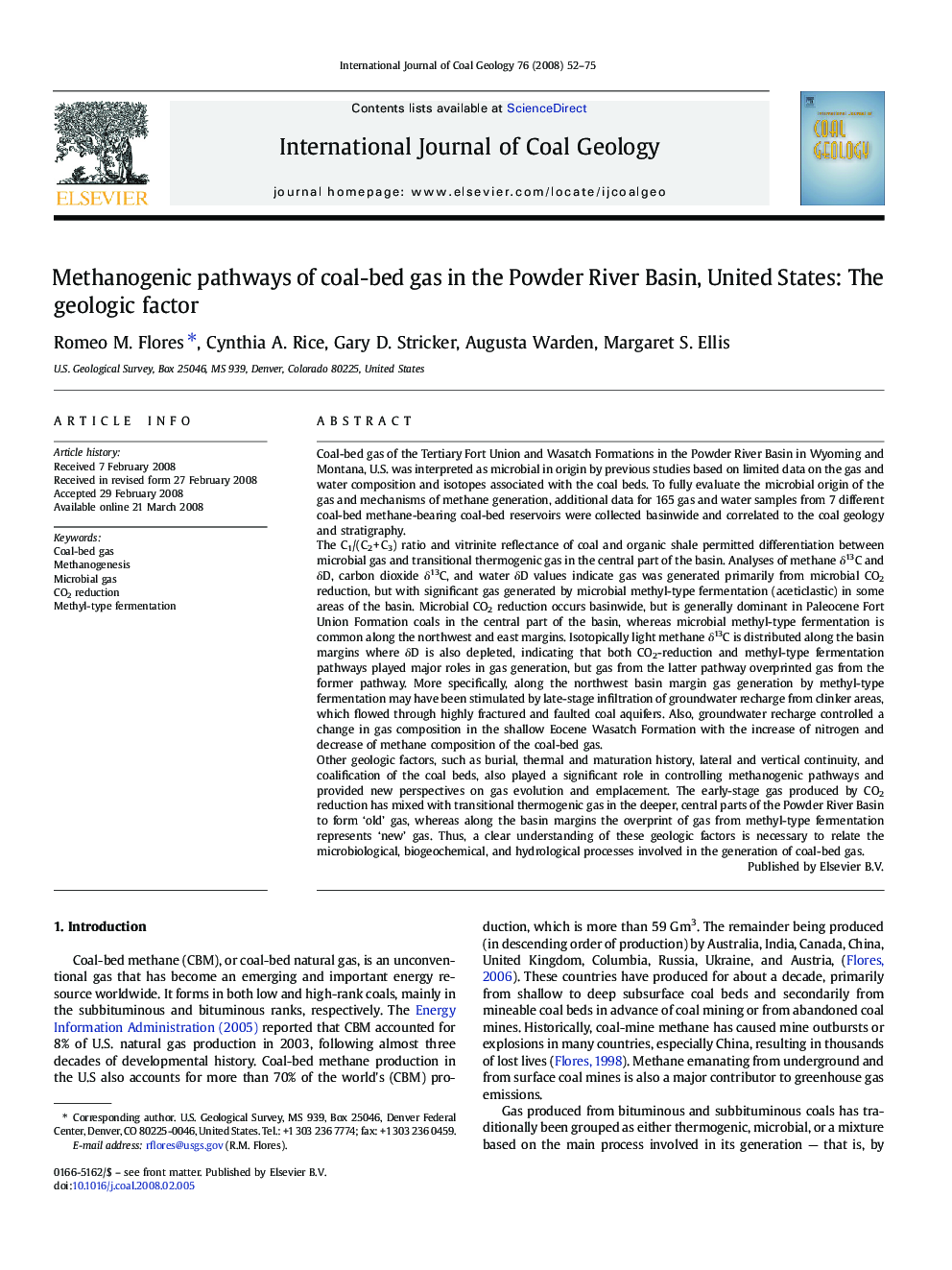| Article ID | Journal | Published Year | Pages | File Type |
|---|---|---|---|---|
| 1754040 | International Journal of Coal Geology | 2008 | 24 Pages |
Coal-bed gas of the Tertiary Fort Union and Wasatch Formations in the Powder River Basin in Wyoming and Montana, U.S. was interpreted as microbial in origin by previous studies based on limited data on the gas and water composition and isotopes associated with the coal beds. To fully evaluate the microbial origin of the gas and mechanisms of methane generation, additional data for 165 gas and water samples from 7 different coal-bed methane-bearing coal-bed reservoirs were collected basinwide and correlated to the coal geology and stratigraphy.The C1/(C2 + C3) ratio and vitrinite reflectance of coal and organic shale permitted differentiation between microbial gas and transitional thermogenic gas in the central part of the basin. Analyses of methane δ13C and δD, carbon dioxide δ13C, and water δD values indicate gas was generated primarily from microbial CO2 reduction, but with significant gas generated by microbial methyl-type fermentation (aceticlastic) in some areas of the basin. Microbial CO2 reduction occurs basinwide, but is generally dominant in Paleocene Fort Union Formation coals in the central part of the basin, whereas microbial methyl-type fermentation is common along the northwest and east margins. Isotopically light methane δ13C is distributed along the basin margins where δD is also depleted, indicating that both CO2-reduction and methyl-type fermentation pathways played major roles in gas generation, but gas from the latter pathway overprinted gas from the former pathway. More specifically, along the northwest basin margin gas generation by methyl-type fermentation may have been stimulated by late-stage infiltration of groundwater recharge from clinker areas, which flowed through highly fractured and faulted coal aquifers. Also, groundwater recharge controlled a change in gas composition in the shallow Eocene Wasatch Formation with the increase of nitrogen and decrease of methane composition of the coal-bed gas.Other geologic factors, such as burial, thermal and maturation history, lateral and vertical continuity, and coalification of the coal beds, also played a significant role in controlling methanogenic pathways and provided new perspectives on gas evolution and emplacement. The early-stage gas produced by CO2 reduction has mixed with transitional thermogenic gas in the deeper, central parts of the Powder River Basin to form ‘old’ gas, whereas along the basin margins the overprint of gas from methyl-type fermentation represents ‘new’ gas. Thus, a clear understanding of these geologic factors is necessary to relate the microbiological, biogeochemical, and hydrological processes involved in the generation of coal-bed gas.
